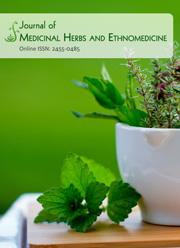In-Vitro antidiabetic potential of Piliostigma thonningii leaf column chromatographic fractions
DOI:
https://doi.org/10.25081/jmhe.2023.v9.8686Keywords:
Diabetes mellitus, Piliostigma thonningii, Alpha-glucosidase, Hemoglobin glycosylation, Column chromatographyAbstract
Diabetes mellitus is a metabolic disease characterized by high blood sugar that profoundly affects human health and economy. Although there are a plethora of antidiabetic drugs in the market, the efficacy shown by some medicinal plants sometimes outperforms that of synthetic drugs while being more affordable and less toxic. This study was conducted to evaluate the anti-diabetic potential of column-chromatographic fractions of Piliostigma thonningii leaf. Phytochemical screening, column, and thin layer chromatography were respectively conducted following standard laboratory protocols. The in-vitro antidiabetic activity of the extracts was assessed using alpha-glucosidase and hemoglobin glycosylation inhibitory methods. A total of 175 column fractions (CF1-CF175) were eluted respectively. Thin layer chromatography protocols employed pooled a total of 11 (A-J) fractions. The result showed significant (P>0.05) inhibition of alpha-glucosidase in only fraction J2, which was significantly greater when compared to standard drug (Voglibose) and crude extract. Also, there was no significant hemoglobin glycosylation inhibitory effect in all fractions compared with crude extract and standard drugs (Voglibose). In conclusion, P. thonningii leaf exhibited alpha-glucosidase and hemoglobin glycosylation inhibitory potentials that further support its usage as a hypoglycemic agent.
Downloads
References
Adisa, R. A., Oke, J., Olomu, S. A., & Olorunsogo, O. (2005). Inhibition of human haemoglobin glycosylation by flavonoid containing leaf extracts of Cnestis ferruginea. Journal of the Cameroon Academy of Sciences, 4, 351-359.
Asuzu, I. U., & Nwaehujor, C. O. (2013). The Anti-diabetic, hypolipidemic and anti-oxidant activities of D-3-O-methylchiroinositol in alloxan-induced diabetic rats. Hygeia Journal of Drugs and Medicines, 5(2), 27-33.
Cho, N. H., Shaw, J. E., Karuranga, S., Huang, Y., da Rocha Fernandes, J. D., Ohlrogge, A. W., & Malanda, B. (2018). IDF diabetes atlas: Global estimates of diabetes prevalence for 2017 and projections for 2045. Diabetes Research and Clinical Practice, 138, 271-281. https://doi.org/10.1016/j.diabres.2018.02.023
Davies, M. J., Heller, S., Skinner, T. C., Campbell, M. J., Carey, M. E., Cradock, S., Dallosso, H. M., Daly, H., Doherty, Y., Eaton, S., Fox, C., Oliver, L., Rantell, K., Rayman, G., & Khunti, K. (2008). Effectiveness of the diabetes education and self management for ongoing and newly diagnosed (DESMOND) programme for people with newly diagnosed type2 diabetes: Cluster randomised controlled trial. Bmj, 336 (7642), 491-495. https://doi.org/10.1136/bmj.39474.922025.BE
Deshi, S. N., Wonang, D. L., & Dongs, I. S. (2014). Exploration of Piliostigma thonningii (schum.) A tropical tree for possible utilization as a plant-derived pesticide. Academic Journal of Interdisciplinary Studies, 3(7), 108-114. https://doi.org/10.5901/ajis.2014.v3n7p108
Evans, W. C. (2009). Trease and Evans' Pharmacognosy. (16th ed.). London, UK: Elsevier Health Sciences.
Harborne, J. B. (1998). Text Book of Phytochemical Methods. A Guide to Modern Techniques of Plant Analysis. (5th ed.). London, UK: Champraan and Hall Limited.
Ighodaro, O. M., Agunbiade, S. O., Omole, J. O., & Kuti, O. A. (2012). Evaluation of the Chemical, Nutritional, Antimicrobial and Antioxidant-vitamin Profile of Piliostigma thonningii Leaves (Nigeria species). Research Journal of Medicinal Plants, 6(7), 537-543. https://doi.org/10.3923/rjmp.2012.537.543
Jamison, D. T., Breman, J. G., Measham, A. R., Alleyne, G., Claeson, M., Evans, D. B., Musgrove, P. (2006). Disease control priorities in developing countries. (2nd ed.). Washington, DC: World Bank and Oxford University Press.
Krishnaveni, S., Balasubramanian, T., & Sadasivam, S. (1984). Sugar distribution in sweet stalk sorghum. Food Chemistry, 15(3), 229-232. https://doi.org/10.1016/0308-8146(84)90007-4
Kumar, M., Alok, S., Jain, S. A., Verma, A., Mahor, A., & Sabharwal, M. (2013). Morphology, pharmacological activity, pharmaceutical preparation, doses and side effect of Coccinia indica (Wight and Arn): An overview. Journal of Coastal Life Medicine, 1(4), 330-336.
Kumar, S., Narwal, S., Kumar, V., & Prakash, O. (2011). α-glucosidase inhibitors from plants: A natural approach to treat diabetes. Pharmacognosy Reviews, 5(9), 19-29. https://doi.org/10.4103/0973-7847.79096
Kwaji, A., Bassi, P. U., Aoill, M., Nneji, C. M., & Ademowo, G. (2010). Preliminary studies on Piliostigma thonningii Schum leaf extract: Phytochemical screening and in vitro antimalarial activity. African Journal of Microbiology Research, 4(9), 735-739.
Lu, X., & Zhao, C. (2020). Exercise and type 1 diabetes. In J. Xiao (Eds.), Physical Exercise for Human Health. Advances in Experimental Medicine and Biology (Vol. 1228, pp. 107-121). Singapore: Springer. https://doi.org/10.1007/978-981-15-1792-1_7
Moghadamtousi, S. Z., Fadaeinasab, M., Nikzad, S., Mohan, G., Ali, H. M., & Kadir, H. A. (2015). Annona muricata (annonaceae): A review of its traditional uses, isolated Acetogenins and Biological Activities. International Journal of Molecular Sciences, 16(7), 15625-15658. https://doi.org/10.3390/ijms160715625
Ocvirk, S., Kistler, M., Khan, S., Talukder, S. H., & Hauner, H. (2013). Traditional medicinal plants used for the treatment of diabetes in rural and urban areas of Dhaka, Bangladesh an ethnobotanical survey. Journal of Ethnobiology and Ethnomedicine, 9, 43. https://doi.org/10.1186/1746-4269-9-43
Patil, R., Patil, R., Ahirwar, B., & Ahirwar, D. (2011). Current status of Indian medicinal plants with antidiabetic potential: a review. Asian Pacific Journal of Tropical Biomedicine, 1(S2), S291-S298. https://doi.org/10.1016/S2221-1691(11)60175-5
Sofowora, A. (1993). Medicinal Plants and Traditional medicine in Africa. Ibadan, Nigeria: Spectrum Books Limited.
WHO. (2021). World health statistics: General Guidelines for Methodologies on Research and Evaluation of Traditional Medicine.
Published
How to Cite
Issue
Section
Copyright (c) 2023 Angela Nnenna Ukwuani-Kwaja, Ibrahim Mohammad Suru, Jude Nwaogu, Ibrahim Sani

This work is licensed under a Creative Commons Attribution 4.0 International License.



 .
. 